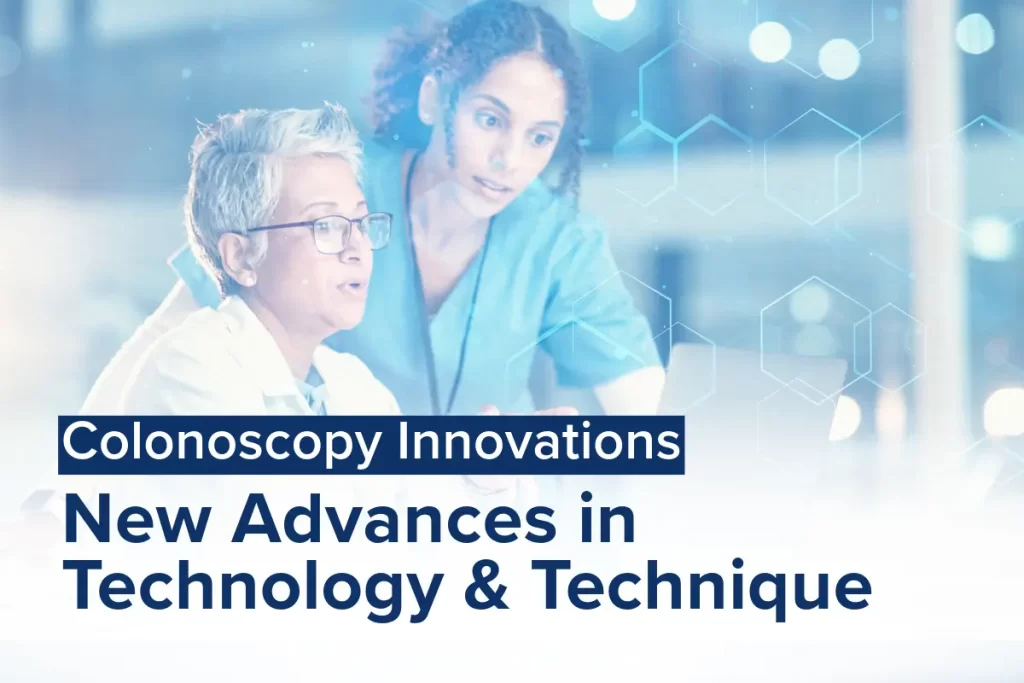Table of Contents
- The Rise of Artificial Intelligence (AI) in Colonoscopy Treatment
- Virtual Colonoscopy
- Enhanced Imaging Technology and Methods
- Capsule Colonoscopy
- Robotic Colonoscopy
- Affordable Access to a Colonoscopy
- Final Thoughts
Colonoscopies were first routinely performed in the late 1960s. The advancement of a flexible colonoscope improved the process, allowing greater comfort for the patient and better visibility for the physician when compared to prior methods.
Beginning in the 1980s, colonoscopies became regarded as a valuable tool in finding colon polyps. Polyps are growths that can vary in size and shape on the lining of the colon. Medical science began to study polyps in the 1970s and concluded that polyps had the tendency to turn into cancerous growths.
Recognizing that polyps often did not present symptoms, routine screenings were implemented to find and remove polyps. Colonoscopies became the primary tool in this effort, with early detection as the most effective weapon in the fight against colon cancer.
The Rise of Artificial Intelligence (AI) in Colonoscopy Treatment
As with many fields in recent years, AI has made a significant impact in colon care. This technology has contributed in the following ways:
- Image Analysis: AI has proven effective in analyzing scans, detecting abnormalities that may not be readily apparent to human eyes.
- Predictive Analytics: By utilizing large datasets involving family medical history, current medical conditions, and lifestyle characteristics, AI may better analyze risk factors and help define optimal screening intervals.
- Report Automation: AI can generate standardized reports to reduce instances of human error and improve communication, including integration with electronic health records (EHR) systems.
- Enhanced Decision Support: AI can provide real-time insights to the medical provider regarding polyps and lesions that may be missed or deserve additional scrutiny.
AI also enhances opportunities in patient communication, medical provider training, and education, all of which contribute positively to better patient outcomes.
Virtual Colonoscopy
A virtual colonoscopy is a CT scan of the colon and rectum, a technique developed in the 1990s. Computed tomography (CT) is an imaging technique that uses multiple X-rays to create views of the body from different angles.
During the procedure, a CT scanner captures numerous simultaneous X-rays to create 2D and 3D images of the colon. The process typically takes only 10-15 minutes and does not require sedation, making it less invasive than a traditional colonoscopy.
Before the virtual colonoscopy, the patient undergoes a bowel preparation, similar to a traditional colonoscopy, to ensure the colon is clear for the scan. After the scan, a radiologist reviews the findings and looks for polyps. If polyps are discovered, however, a traditional colonoscopy is needed to remove them.
Enhanced Imaging Technology and Methods
Colonoscopy technology has greatly advanced from its early days. Some of the latest developments include:
- High-Definition Colonoscopy: This technology provides higher resolution images, leading to clearer visualization of colon tissue and the ability to detect small polyps and lesions that may otherwise go unnoticed.
- Narrow-Band Imaging (NBI): This technique uses specific wavelengths of blue and green light to improve the contrast of the colon lining, aiding in the detection of early cancers or precancerous lesions.
- Chromoendoscopy: Dyes or stains are applied to the colon lining during a colonoscopy, enhancing visibility of features and lesions for improved detection.
Capsule Colonoscopy
This technique involves swallowing a small pill-shaped camera, or “capsule,” which travels through the gastrointestinal tract, capturing thousands of images. The patient undergoes bowel preparation prior to the procedure to ensure the colon is clear.
The images are transmitted wirelessly to a recording device worn by the patient. The capsule is excreted naturally within 24-48 hours and is designed to be biodegradable. While comfortable and providing a comprehensive view of the colon, if polyps or lesions are found, a traditional colonoscopy may be necessary for removal.
Robotic Colonoscopy
A robotic colonoscopy utilizes a medical device system with a robotic arm to hold and maneuver the colonoscope, controlled by a physician at a console. This setup enhances visibility, maneuverability, and provides high-definition imagery with 3D visualization.
This technology allows for improved navigation to difficult-to-reach areas in the colon, potentially aiding in better detection of lesions.
Affordable Access to a Colonoscopy
Regardless of the technology used, colonoscopy remains an essential screening for individuals aged 45 and older to ensure early detection of colon cancer. Unfortunately, accessibility to this care can be challenging for uninsured or self-pay patients.
ColonoscopyAssist provides access to over 1000 gastroenterologists nationwide, offering affordable, transparent pricing for those with high-deductible insurance, making essential care more accessible.
For those with high-deductible insurance, ColonoscopyAssist is a valuable ally in getting them the care they need at a manageable cost.
Final Thoughts
Advancements in colonoscopy technology have significantly improved the ability to detect colon cancer early, enhancing patient comfort and diagnostic accuracy. ColonoscopyAssist remains a national leader in ensuring individuals have access to affordable, essential screenings at locations near them, regardless of the technology used.


























